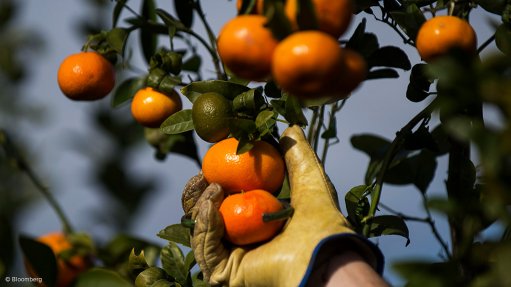Study confirms South Africa can produce most components needed for the transmission, distribution value chain
A study on value chain mapping of the South African transmission and distribution networks published by nonprofit the Localisation Support Fund (LSF) finds there are opportunities to localise components in this value chain, should concerns and constraints be effectively addressed.
The Eskom Transmission Development Plan (TDP) of 2022 estimates that 53 GW of new generation capacity will be added to the network between 2023 and 2032.
For this to happen, significant transmission and distribution investment of more than R70-billion for transmission alone, is needed in the next five years and it is estimated to grow by more than three times that in the five years that follow.
The LSF estimated this increase using a simple extrapolation based on the length of the powerline and the number of transformers needed in the latter five years when compared to that for the first five years. This was aimed at providing an indication of the scale of the anticipated growth.
Therefore, for the next ten years, between R288-billion and R360-billion of transmission-grid-related investment is anticipated.
This, in addition to refurbishing the aging infrastructure already in the system, will create opportunities for localisation of the manufacturing of transmission and distribution components.
The energy value chain manufacturing sector, for example, has the capability to manufacture 33% of the components locally.
The report shows that South Africa has the capability of local manufacture of powerline-related products close to 100%. Given the growth in demand, local capability can be expanded, strengthened and prepared for export.
The spend for powerlines could be in excess of R140-billion in transmission and R25-billion in distribution in the next 10 to 15 years.
Moreover, the transmission substation-related products are largely comprised of imported items such as large power transformers, shunt reactors, switchgear and instrument transformers.
According to the LSF, partnerships with foreign players experienced in this field can assist in promoting localisation efforts.
The distribution substation-related products are comprised of both imported items and locally manufactured ones. The split is about 60% local and 40% imported.
The LSF says there is an opportunity for increased localisation in these areas, including transmission.
For example, South Africa has the potential to leverage its record for Class 0 and 1 transformers – low- and medium voltage – and emerge as a significant player in the global export market.
“A sustained level of demand can lead to reduced production costs, which can drive down prices to enable the competitiveness of local products for export,” the LSF states.
The LSF was established in 2021 by private sector contributors that are committed to advancing localisation in South Africa.
In line with national efforts around securing energy supply, the LSF initiated the study to understand the local manufacturing capability for components used in the transmission and distribution network. The study provides a list of value chain systems and products with an emphasis on local manufacturing.
The study also maps out manufacturing capability against the manufactured products active within the value chain to identify manufacturing import gaps.
Speaking at the round table discussion on the findings of the study held at the Industrial Development Corporation offices last week, LSF executive head Thami Moatshe said by effectively coordinating the country’s manufacturing capabilities and understanding the challenges and opportunities in localisation within the transmission and distribution value chain, ”we can leverage opportunities for job creation and capitalise on the capabilities of both local and foreign manufacturers in the transmission and distribution value chain”.
In turn, avenues for skills development can be created together with academia on programmes such as the Eskom Power Engineering Programme.
With an envisaged large build programme, there is a significant opportunity for skills development, job creation, localisation and the establishment of sustainable export opportunities.
The report notes that, despite the South African government's support for innovation and the willingness of companies and utilities to embrace it, the regulatory structure presents a significant hurdle to the adoption of innovative devices and systems.
“Given the expected expansion of the industry encompassing Eskom, municipalities and independent power producers (IPPs) in response to the demands for network reinforcement, expansion, replacement, refurbishment, and the implementation of a new construction programme, there are significant opportunities for local suppliers to enhance their manufacturing capabilities,” Moatshe highlighted.
Added to this is the emergence of IPPs and the need at the local government level to upgrade and expand their own power grids.
All these projects will need new, innovative products, and the refurbishment, upgrading or replacement of existing networks.
The LSF study has revealed that, while South Africa has the capability, locally, to manufacture most of the components needed for the transmission and distribution value chain, certain challenges and constraints faced within the value chain have to be addressed.
These include inconsistent workload for local suppliers, delays or deferrals of capital projects, access to and high cost of raw materials compared with competing developing countries, low costs of imported products, compliance with regulations and standards, shortage of skilled workforce, and limited research and development and innovation capability, Moatshe added.
Comments
Press Office
Announcements
What's On
Subscribe to improve your user experience...
Option 1 (equivalent of R125 a month):
Receive a weekly copy of Creamer Media's Engineering News & Mining Weekly magazine
(print copy for those in South Africa and e-magazine for those outside of South Africa)
Receive daily email newsletters
Access to full search results
Access archive of magazine back copies
Access to Projects in Progress
Access to ONE Research Report of your choice in PDF format
Option 2 (equivalent of R375 a month):
All benefits from Option 1
PLUS
Access to Creamer Media's Research Channel Africa for ALL Research Reports, in PDF format, on various industrial and mining sectors
including Electricity; Water; Energy Transition; Hydrogen; Roads, Rail and Ports; Coal; Gold; Platinum; Battery Metals; etc.
Already a subscriber?
Forgotten your password?
Receive weekly copy of Creamer Media's Engineering News & Mining Weekly magazine (print copy for those in South Africa and e-magazine for those outside of South Africa)
➕
Recieve daily email newsletters
➕
Access to full search results
➕
Access archive of magazine back copies
➕
Access to Projects in Progress
➕
Access to ONE Research Report of your choice in PDF format
RESEARCH CHANNEL AFRICA
R4500 (equivalent of R375 a month)
SUBSCRIBEAll benefits from Option 1
➕
Access to Creamer Media's Research Channel Africa for ALL Research Reports on various industrial and mining sectors, in PDF format, including on:
Electricity
➕
Water
➕
Energy Transition
➕
Hydrogen
➕
Roads, Rail and Ports
➕
Coal
➕
Gold
➕
Platinum
➕
Battery Metals
➕
etc.
Receive all benefits from Option 1 or Option 2 delivered to numerous people at your company
➕
Multiple User names and Passwords for simultaneous log-ins
➕
Intranet integration access to all in your organisation




















